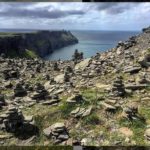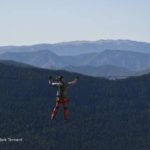Last weekend saw me in the Vanoise National Park. The first day I left from the Refuge de l’Orgere and headed up to the Col de la Masse (2900m). On the way up I saw a herd of ibex (bouquetin) and stopped to take some photographs. There’s still large quantities of snow lying from c. 2500m and early in the morning I had to kick steps with the edge of my boots to make a secure ?foothold?.
Once at the Col I was looking down into the Fond d’Aussois with the Dent Parrachee opposite. I spotted a couple of ptarmigan (lagopede) take flight, still with the remnants of their winter plumage. Since it was still only midday I decided that I should take in the nearby summit of the Rateau d’Aussois (3100m). The climb up was rocky especially since I was avoiding the hard patches of neve but I soon gained the summit without any dramas. Looking to the south the mountains of the Ecrins imposed themselves and closer to home the Aiguilles d’Arves three distinct summits were easy to pick out.
The descent was fun from below the col as the sun had thawed the surface layer of snow to make it ideal for a standing glissade. It was just like skiing only with very short skis; pole plants and ?short swings? using the edges of my boots to turn. Approaching the first trees I could smell the aroma of pine and the dwarf rhodendrons reddy-pink flowers provided a wonderful contrast with the bright greens of the larch trees. I went down the path past a 300 year old pine stump to the Refuge Aiguille Doran to chat with the guardienne about upcoming tours of the Vanoise.
Back now to the Refuge de l’Orgere to enjoy a cool beer on the terrace. A wonderful day.


